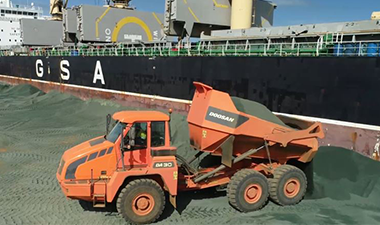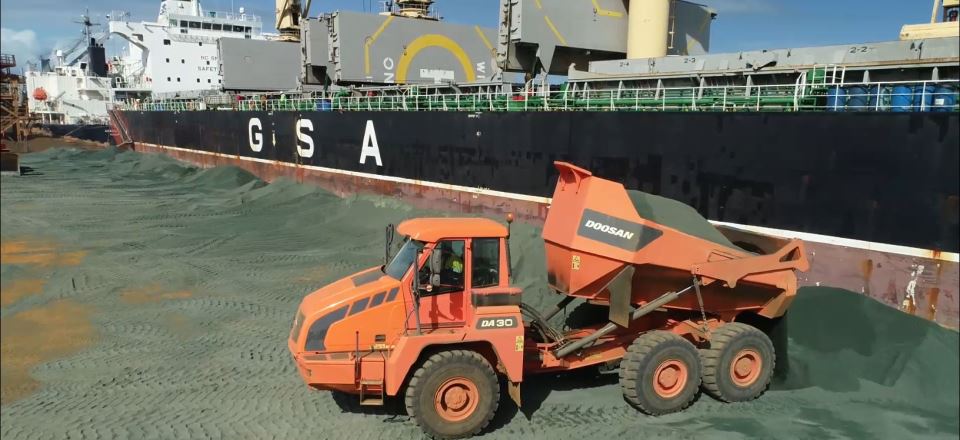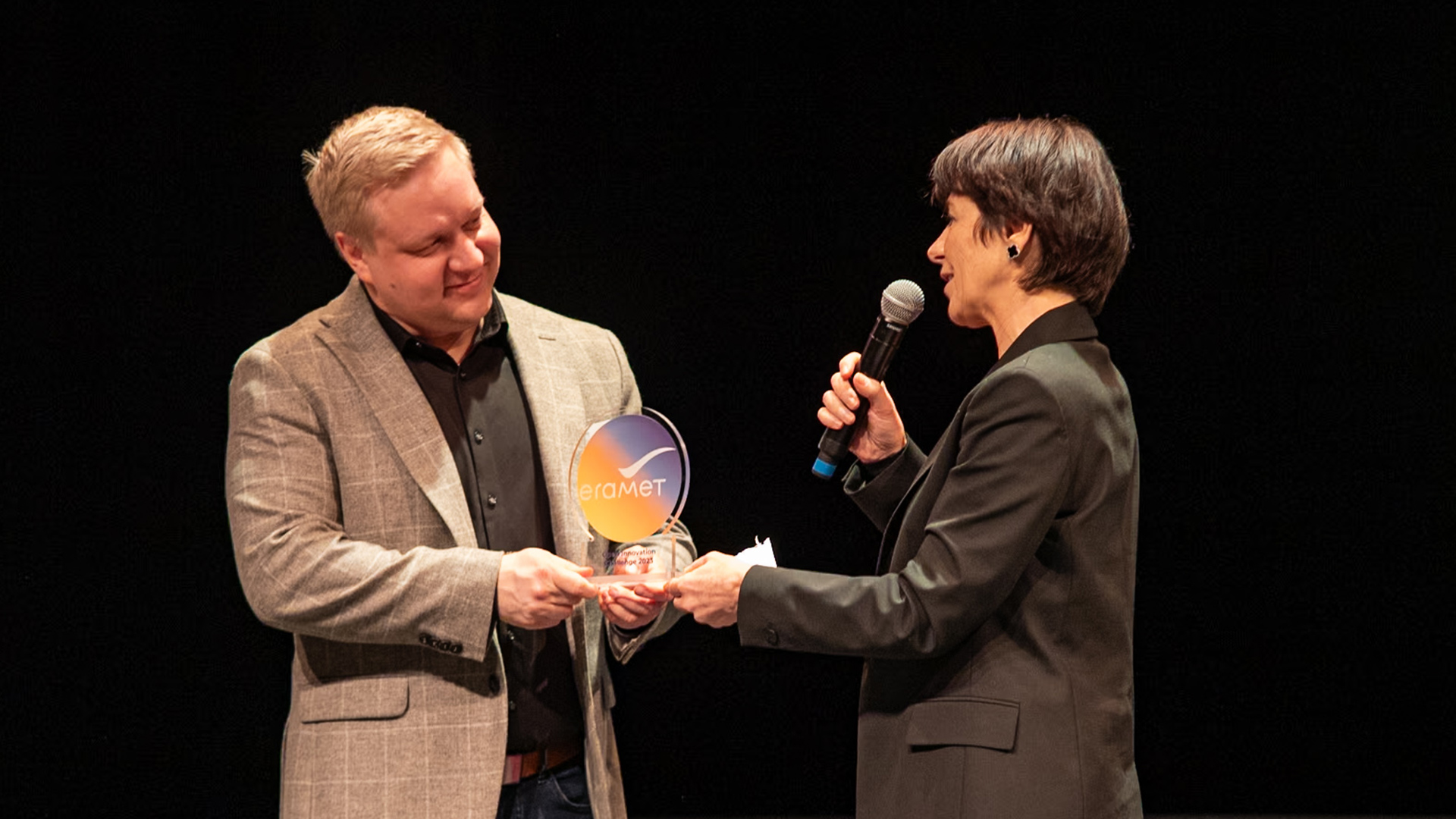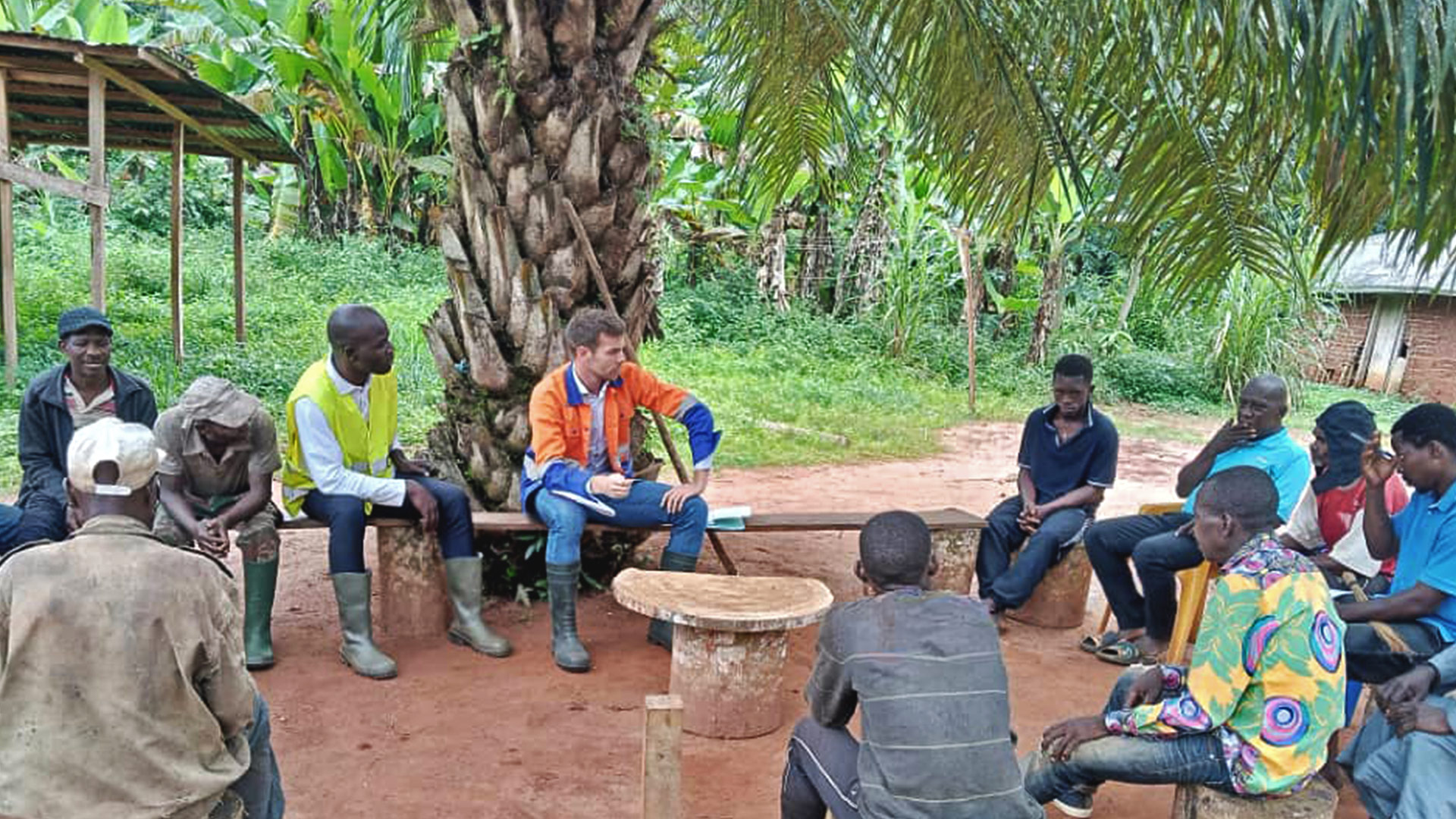SLN has just shipped 22,000 tonnes of slag to the United States. So, this is a great opportunity to learn more about the benefits of this commercial product, known as SLAND, which can boast of being fully compatible with the circular economy.
22,000 tonnes! That’s how much SLAND has just been sold and shipped by SLN to IMI, an American company specializing in the supply of raw materials. So, what is SLAND? SLAND is a commercial product developed by our New Caledonian subsidiary, which is fully compatible with the circular economy.
It is worth mentioning that SLN produces an average of 55,000 tonnes of ferronickel each year and 1.8 million tonnes of slag. Since only 10% of the slag produced was previously being sold on the local market, the company decided to seek out new export markets for this by-product. SLAND is particularly valuable because it can be used as a substitute for natural sand: its applications are very diverse, ranging from paint blasting, as in the case of IMI, to the manufacture of asphalt, road base courses, backfill or concrete. In some regions of the world, sand is becoming such a scarce raw material – its extraction is often synonymous with environmental degradation – that investment banks such as the World Bank are now refusing to finance projects involving the extraction of sand from beaches or lagoons.
“This commercial shipment to the United States is a success story for SLN and Eramet,” says Yves Veran, head of the slag recovery project. The sale shows that a market is opening up. It also enables the Group to move forward in terms of its CSR road map, by working to promote the development of the circular economy: for example, whereas cement manufacturing has a large carbon footprint, SLAND, which can act as a partial substitute, results from recycling and is “a perfectly neutral product, as it does not involve releasing any materials into sea or fresh water,” explains Yves Veran.
- Click here to find out more about responsible resource management at Eramet.






